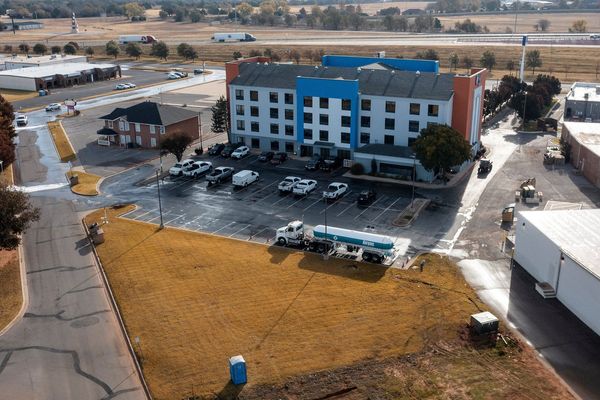
Tech stocks rarely falter in November unless major disruptions hit the market — and this year, troubling signals are already starting to emerge.
November has historically been the best-performing month for the Nasdaq 100, averaging gains of 2.64% since 1985 and closing higher 70% of the time.
But 2025 is breaking that pattern. As of nearly mid-month, the index – as tracked by the Invesco QQQ Trust (NASDAQ:QQQ) – is down 2.9%, on pace for its worst November since the 7.9% drop in 2008.
From 2012 to 2024, the tech-heavy benchmark closed green every November except for a negligible 0.26% dip in 2018.
It's also worth noting that steep November declines in tech are highly unusual, with the Nasdaq 100 falling more than 5% only four times in the last 40 years — in 1987, 2000, 2007 and 2008 — each triggered by major market disruptions.
So what’s happening this year?
AI Rally Hits Execution Wall
The AI revolution that fueled Wall Street's boom in recent years is now confronting physical infrastructure limits, not demand or capital.
Jordi Visser, head of AI Macro Nexus Research at 22V Research, said that 2026 will usher in a new phase for the AI market.
According to Visser, CoreWeave Inc. (NASDAQ:CRWV)‘s recent earnings call was a watershed moment.
The private AI cloud firm – among the poster children of the AI-driven market rally – cut its 2025 capex guidance by 40%, slashing planned spending from $20-$23 billion to just $12-$14 billion, not because of weakening demand, but due to missed data center construction deadlines by third-party developers.
“I think the next phase of this revolution will be very different for investors: the constraint has moved from capital to concrete and with it, I expect a very different year in 2026,” Visser said in an emailed note.
Before November, CoreWeave shares had surged more than 240% year-to-date — but in just two weeks, they've tumbled 40%, wiping out a large chunk of those gains.
"This is a systemic problem that the industry will have to deal with for the foreseeable future," CoreWeave's management said during the earnings call.
Even Oracle Corp. (NYSE:ORCL), with a $657 billion market cap and $455 billion backlog, is rationing customers due to infrastructure delays. GE Vernova (NYSE:GEV), the top supplier of gas turbines and power grid hardware, has already sold out its equipment pipeline through 2028.
Read also: K-Shaped Economy Fuels Luxury Boom: 10 Stocks To Watch Now
Valuations At Risk As Capacity, Not Capital, Becomes Scarce
Visser said the AI sector is shifting from capital-constrained to delivery-constrained, with execution risk now the dominant force shaping investor returns.
In his view, this moment is a regime change: “In 2026, the winners will be those who convert contracts into capacity while preserving margins amid rising costs and tighter timelines.”
Instead of chasing innovation alone, markets will begin rewarding firms that can build, deliver, and monetize.
Investors should start pricing in delays, cost overruns, and infrastructure gaps — not just forward revenue.
A K-Shaped Economy In Full Display
Macroeconomic signals are also flashing red. The Federal Reserve is easing monetary policy amid a softening labor market, while auto loans, credit cards, and housing are showing signs of stress. Oil prices have plunged 15% year to date, a signal consistent with a late-cycle economic slowdown.
Yet the AI sector remains capacity-starved. According to Visser, the Magnificent Seven are spending over $400 billion annually on infrastructure they can't fully monetize.
That's the paradox Visser outlines: "The very success of AI has become its greatest vulnerability."
While the bottom half of the K — U.S. consumers — battle recession-like conditions, the top half — the AI elite — is constrained by a lack of transformers, transmission, and time.
Read now:
Photo: Shutterstock







